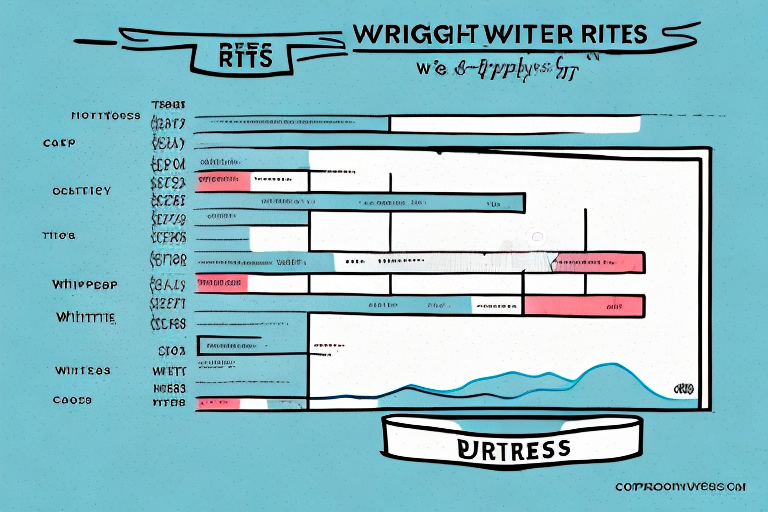Understanding UPS Shipping Rates Chart by Weight
When it comes to shipping with UPS, comprehending their shipping rates chart based on weight is essential. This chart outlines the cost per pound for shipping packages through various UPS services, aiding you in planning your shipments and budgeting effectively. In this article, we will delve into how to read and interpret the UPS shipping rates chart, the factors influencing shipping rates, methods to calculate your shipping costs, tips for saving money on UPS shipping, common mistakes to avoid, comparisons with competitors, strategies to negotiate better rates, an overview of UPS services, tracking your shipment, insurance options, packaging and labeling tips, international shipping with UPS, and answers to frequently asked questions.
How to Read and Interpret the UPS Shipping Rates Chart
The UPS shipping rates chart is structured by weight and destination zone, with different service levels such as Ground, 2nd Day Air, and Next Day Air listed across the top. The chart is color-coded for ease of use but can appear complex initially. Spend time familiarizing yourself with the chart to accurately determine the shipping cost based on your package's weight and destination.
Keep in mind that the UPS shipping rates chart is updated annually. Ensure you are referring to the latest version before making shipping decisions. Additionally, UPS offers discounts for high-volume shippers, which can lead to significant savings if you ship frequently.
Another critical aspect is the type of package you are shipping. UPS has specific guidelines for packaging and labeling, and non-compliance can result in additional fees or package refusal. Review UPS's packaging and labeling requirements before shipping to avoid unexpected costs or delays.
Factors That Affect UPS Shipping Rates
Several elements can influence UPS shipping rates, including:
- Package Weight and Dimensions: Heavier and larger packages generally cost more to ship.
- Destination and Origin Zip Codes: Distance between the origin and destination impacts the rate.
- Service Type: Ground, air, and international services have different pricing structures.
- Additional Fees: Services like signature confirmation or special handling incur extra costs.
- Seasonal Demand: Peak seasons, such as holidays, may lead to higher rates due to increased demand.
The distance your package travels significantly affects the shipping cost—the farther the distance, the higher the rate. Moreover, seasonal fluctuations can influence rates, with peak times leading to increased prices and potential delays.
UPS provides various shipping options, including Ground, Air, and International services. Each option has distinct rates and delivery times, so it's essential to choose the one that best aligns with your needs and budget. Businesses and frequent shippers may benefit from discounted rates, making it worthwhile to explore these options.
How to Calculate Shipping Costs with the UPS Shipping Rates Chart
To calculate the cost of shipping a package using the UPS shipping rates chart:
- Determine the weight of your package.
- Identify the destination zone based on the destination zip code.
- Select the desired UPS service level (e.g., Ground, 2nd Day Air).
- Multiply the package weight by the corresponding rate on the chart for your chosen service and zone.
Remember that UPS offers various service levels, each with different rates and delivery times. Additional fees for services like signature confirmation or insurance should also be considered to ensure you are getting the best value for your shipping needs.
Tips for Saving Money on UPS Shipping Rates
- Consolidate Shipments: Combine multiple packages into one to reduce overall shipping costs.
- Avoid Express Services: Use standard shipping options unless expedited delivery is necessary.
- Utilize UPS My Choice: Schedule deliveries for times when you’re available to receive packages, avoiding missed delivery fees.
- Adhere to Packaging Standards: Proper packaging and labeling prevent delays and surcharges.
- Leverage Discounts: Take advantage of UPS discounts for businesses, non-profits, and frequent shippers.
- Compare Shipping Carriers: Evaluate rates and services from alternative carriers like USPS or FedEx to find the best deal. Check out our comparison guide on comparing shipping carriers.
Common Mistakes to Avoid When Using the UPS Shipping Rates Chart
To ensure accurate shipping costs and timely delivery, avoid these common mistakes:
- Incorrect Weight Calculations: Always double-check the weight of your package.
- Inaccurate Destination Zip Code: Ensure the destination zip code is correct to avoid rate discrepancies.
- Overlooking Additional Fees: Factor in any extra services or handling fees.
- Improper Packaging: Use appropriate materials to prevent damage and additional charges.
- Mislabeling: Clearly label your package to ensure it reaches the correct destination without delays.
- Selecting the Wrong Service Level: Choose the appropriate service based on urgency and budget to avoid unnecessary costs or delays.
Additionally, plan shipments ahead of peak seasons to mitigate higher rates and longer delivery times, ensuring smoother shipping experiences.
Comparing UPS Shipping Rates with Competitors
When evaluating shipping options, comparing UPS rates with competitors like FedEx and USPS can help you secure the best deal for your needs. While UPS may be pricier for certain shipments, they offer additional services such as comprehensive tracking and insurance options.
Shipping rates vary based on package size, weight, and distance. It's advisable to compare rates across different carriers and service levels to ensure optimal pricing. Additionally, inquire about bulk shipment discounts or promotions that might be available with other carriers.
How to Negotiate Better UPS Shipping Rates for Your Business
For businesses with high shipping volumes, negotiating better rates with UPS is possible. Here are some strategies:
- Partner with a 3PL: Collaborate with a third-party logistics provider (3PL) to leverage their shipping volume for better rates.
- Use UPS Online Tools: Utilize UPS’s online shipping tools to access competitive rates and manage shipments efficiently.
- Analyze Shipping Data: Examine your shipping patterns to identify opportunities for cost optimization, such as consolidating shipments or adjusting delivery schedules.
- Optimize Packaging: Use the most cost-effective packaging materials to reduce dimensional weight charges.
By understanding and optimizing your shipping strategies, you can negotiate favorable rates and lower your overall shipping expenses.
Understanding the Different Types of UPS Shipping Services Available
UPS offers a range of shipping services tailored to various needs, including:
- Ground: Cost-effective for larger, heavier packages with standard delivery times.
- 3 Day Select: Reliable delivery within three business days.
- 2nd Day Air: Expedited delivery within two business days.
- Next Day Air: Overnight delivery for urgent shipments.
- International Shipping: Comprehensive options for global shipments, including Customs handling and tracking.
Choosing the right service depends on your package’s size, weight, destination, and required delivery speed. For detailed information on each service, visit the UPS Shipping Services Overview.
For international shipments, be aware of additional customs and documentation requirements. Understanding these can help prevent delays and unexpected costs. Research the specific regulations of your destination country to ensure a smooth shipping process.
How to Choose the Right UPS Shipping Service for Your Needs
Selecting the appropriate UPS shipping service involves considering several factors:
- Package Weight and Dimensions: Heavier and larger packages may benefit from Ground shipping, while smaller, lighter items might be more cost-effective with air services.
- Delivery Speed: Determine how quickly your package needs to arrive. Faster services like UPS Next Day Air are ideal for urgent deliveries but come at a higher cost.
- Destination: Domestic and international destinations may require different services and have varying rates.
- Special Handling: If your package contains fragile or valuable items, opt for services that offer enhanced tracking and insurance.
- Budget: Balance your shipping needs with your budget to choose a service that offers the best value.
Evaluate these factors to select a UPS shipping service that aligns with your specific requirements and ensures timely and cost-effective deliveries.
Tracking Your Shipment with UPS: What You Need to Know
Tracking your UPS shipment is straightforward using their online tracking tool. Enter your tracking number to view your package’s current status and estimated delivery date. Additionally, you can opt to receive updates via text or email notifications for real-time tracking information.
UPS offers enhanced tracking capabilities based on the selected service level. For instance, UPS Next Day Air provides more frequent updates on your package’s location and estimated delivery time. Furthermore, UPS’s “My Choice” feature allows you to customize delivery preferences and receive alerts about any changes in your shipment’s status, ensuring you are always informed about your package's journey.
Understanding Insurance Options with UPS Shipping Services
UPS provides various insurance options to protect your shipments against damage, loss, or theft. It's crucial to understand the terms and conditions of each insurance type, including any deductibles or exclusions. Consider the value of your package and choose an insurance option that offers adequate coverage to safeguard your shipment.
How to Package and Label Your Shipment for Optimal Cost Savings
Proper packaging and labeling are key to minimizing UPS shipping costs and preventing delays. Follow these guidelines to ensure cost-effective and secure shipments:
- Select the Right Box Size: Use a box that fits your items snugly to avoid excess space and reduce the risk of damage.
- Use Appropriate Packing Materials: Protect your items with bubble wrap, packing peanuts, or other suitable materials to prevent movement and damage during transit.
- Seal Your Package Securely: Use strong tape to seal all openings, ensuring the package remains intact during handling.
- Apply Correct Labels and Postage: Clearly label your package with the correct shipping and return addresses, and ensure postage is properly applied to avoid processing delays.
By adhering to these packaging and labeling best practices, you can enhance the safety of your shipments and potentially reduce shipping costs by avoiding mischarges due to oversized packaging or improper labeling.
International Shipping with UPS: Customs, Regulations, and Fees
Shipping internationally with UPS involves navigating customs requirements, regulations, and fees, making it more complex than domestic shipping. To ensure a smooth international shipping experience:
- Research Import Regulations: Understand the destination country’s import laws, prohibited items, and any specific documentation requirements.
- Prepare Necessary Paperwork: Complete required documents such as commercial invoices, certificates of origin, and any other mandated forms to facilitate customs clearance.
- Calculate Duties and Taxes: Be aware of potential duties and taxes your recipient may need to pay upon delivery, and decide who will cover these costs.
- Use Reliable Packaging: Ensure your items are securely packaged to withstand international transit and handling.
Familiarize yourself with UPS’s international shipping guidelines to avoid delays and unforeseen expenses. Proper preparation and adherence to regulations are crucial for successful international shipments.
Common Questions About UPS Shipping Rates Chart Answered
Here are answers to some frequently asked questions regarding the UPS shipping rates chart:
- How do I find the correct rate for my package? Determine your package’s weight, dimensions, destination zone, and desired service level, then refer to the latest UPS shipping rates chart for accurate pricing.
- Why do UPS shipping rates vary by destination or service level? Rates differ based on the distance traveled, delivery speed, and additional services required, reflecting the varying costs associated with different shipping options.
- What should I do if I have concerns about my package’s delivery? Utilize UPS’s tracking tools to monitor your shipment’s status, and contact UPS customer service for assistance with any issues or inquiries.
Overall, understanding the UPS shipping rates chart is vital for accurately estimating your shipping costs and selecting the appropriate service level. By familiarizing yourself with the chart and following best practices for packaging and labeling, you can optimize your shipping process, save money, and ensure your packages arrive safely and on time.








